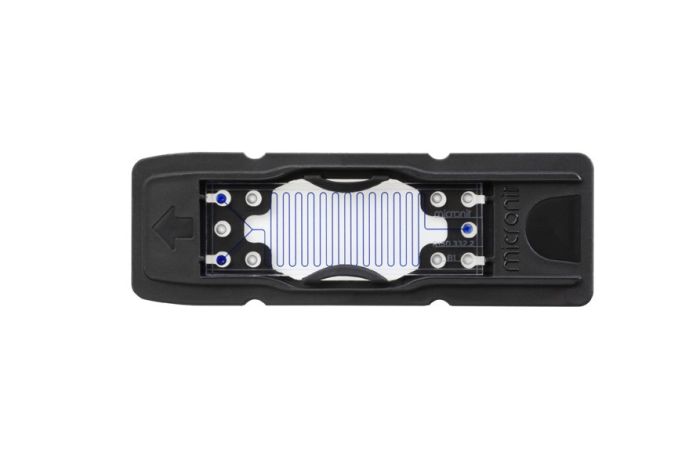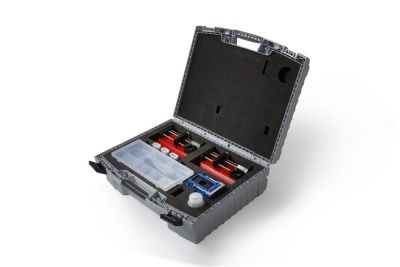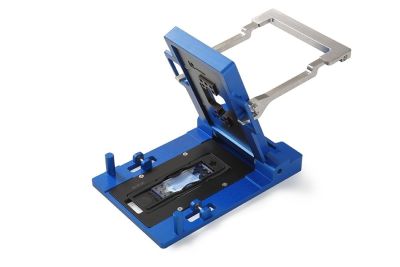shopping_basket
Serpentine channel
SKU
serpentine_config
Availability:
check_circle In stock
As low as $416.59
per pack of 3
Flow cell with a serpentine channel. Details depend on selected configuration.
Application possibilities
This product is designed for observation purposes and offers sublime optical performance in combination with microscopy. This allows high resolution imaging. A regular flow cell offers a limited observation length, using a serpentine shaped channel substantial channel length is created. This allow much longer observation time.
Research examples can be for instance:
- Observation of cell interaction with media, like for instance exposure to toxins or active substances.
- Research on interaction between liquids
- Observation of a reaction
- Use as collection reservoir, for instance combined with a PCR reactions
Unique selling point
- The channels are extremly smooth and are fully optical transparent.
- Glass offers sublime optical transparency and low autofluorescence.
- When fluorescent markers are used we have also a D263-Bio version available for even lower autofluorescence in some critical wave length areas.
- Thin bottom version are compatible with a #1 (11003694 or #1.5 (11003040) coverslip
- Different size available for a optimal match with cell size used or optimal liquid volume.
Key features of the products
| SKU | Number of inlets | Number of outlets | Channel width | Max. cell diameter for optimal observation | Channel height | Glass height on top of channel | Glass height below channel | Chip height | Glass |
| 11003694 | 2 | 1 | 50µm | 10µm | 20µm | 1100µm | 145µm | 1245µm | D263 |
| 11003040 | 3 | 1 | 140µm | 40µm | 45µm | 1100µm | 175µm | 1275µm | D263Bio |
| 11003033 | 3 | 1 | 250µm | 110µm | 140µm | 830µm | 830µm | 1800µm | D263 |
| Unit of measurement | pack of 3 |
|---|---|
| Interface type | Topconnect |
| Chip material | Borosilicate glass |
| Icon | Label | Description | Type | Size | Download |
|---|---|---|---|---|---|
 | Drawing 11003040 | Serpentine 45x140µm, 350mm, TB | 76.9 KB | Download | |
 | Drawing 11003033 | Serpentine 140x250µm, 500mm | 99.7 KB | Download | |
 | Drawing R50.332.3 | Serpentine 20x50µm, 342mm | 79.1 KB | Download |
Customer Questions
We found other products you might like!
- Observation starter kit - topconnect (incl. syringe pumps)
As low as $4,073.05
- Product bundle with interfacing and microfluidic chips
From $2,132.84
To $26,951.83



